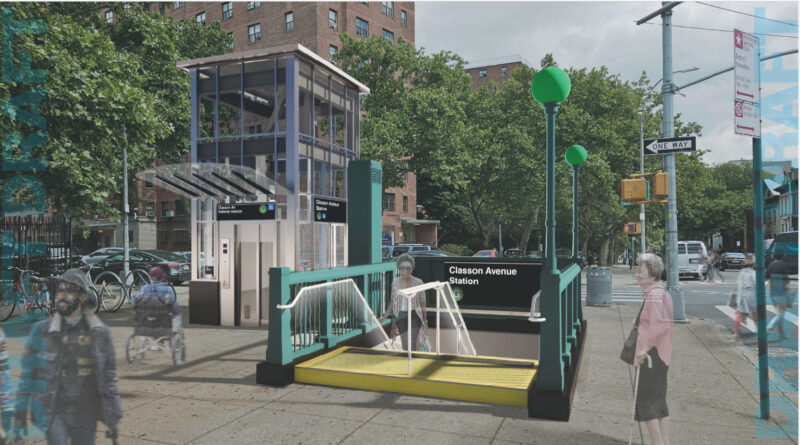
On Monday, the Metropolitan Transportation Authority announced it would break ground on a new project to make the Classon Ave. station in Clinton Hill, Brooklyn fully accessible.
The $57 million project, funded by federal dollars, will include accessibility improvements and related improvements to passenger circulation through reactivation of some 3,500-square-feet of mezzanine space ad two mezzanine-to-platform stairwells.
“In recent years, the MTA has been making dramatic gains toward full system accessibility,” MTA Chair and CEO Janno Lieber said. “Investments in transit accessibility benefit all New Yorkers – seniors, shoppers and stroller-pushing parents as well as people with disabilities – and we are deeply grateful to federal leaders like Senator Schumer and House Democratic Leader Jeffries for assuring the MTA captures its share of Bipartisan Infrastructure Law funds to continue that unprecedented progress.”
Officials said Classon Ave is one of 13 stations in the MTA’s design-build bundle of accessibility upgrades, covering all five boroughs and costing more than $850 million. Approximately $500 million is covered by federal funding, including $360 from the Bipartisan Infrastructure Law.
The project will add three elevators, widen the mezzanine spaces, refurbish seven staircases to ADA standards and install four new turnstiles.
“Working with Rep. Hakeem Jeffries, I’m proud our Bipartisan Infrastructure law created the funding to power critical modernization and accessibility upgrades like these at Classon Avenue Station in Brooklyn,” U.S. Sen. Chuck Schumer (D-NY) said. “With federal investments like this $57 million, the MTA can take on more projects to keep all New Yorkers moving and keep our economy going strong. These much-needed accessibility upgrades, including three elevators and a wider mezzanine, are key to modernizing the system and making public transit more accessible for the riding public, especially for New Yorkers with disabilities, who have long suffered from poor access to our region’s mass transit.”